
Прочитайте та вивчіть слова перед текстом.
Прочитайте текст Bridges та дайте відповідь на запитання після тексту.
Будь ласка, роздрукуйте слова, текст та запитання на пару.
Text: Bridges Word-building Suffixes of Nouns Grammar: 1. The Modal Verbs: must. 2. The Modal Verbs: need Revision: 1. Forms of Infinitive. 2. Degrees of comparison of adjectives. |
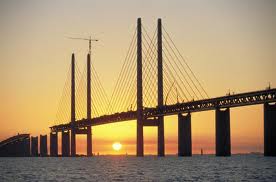
Words you will need.....................................................................................
span, n
span,v e.g.to span a river with a bridge — збудувати міст через ріку masonry [`meIsqnrI] beam, n pier, n truss,n truss,v deck,n stay,n beam bridge suspension bridge cantilever lift bridge
drawbridge swing bridge bascule bridge viaduct, n floodwater, n rigid, adj.
compression, n
tension, n exert, v thrust, n downward, adj wrought [rLt] iron resist, v
damage, v Syn. harm., hurt reduce, v
support, v devise, v Syn: contrive , invent counterbalance, v counterbalance weight, n lack, n Syn: absence, dearth , shortage deficiency , want , need. Ant: adequacy , sufficiency pile,n raise, n ! Mind the difference: to rise, to raise, to arise, to arouse Note: Rise (rose, risen) and arise (arose, arisen) are irregular and intransitive, i.e. they never have a direct object. Raise and arouse are regular and transitive — they are usually followed by a direct object. Arouse is often used in the figurative sense. continue, v Syn.: go on e.g. Go on reading. – Продовжуйте читати. pivot, v
incline, v. Syn: slope , tilt |
прогін (моста); відстань між опорами (арки, склепіння); довжина моста; ширина ріки; розмах рук і т.п. з’єднувати береги, простягатися
кам`яна (цегляна) кладка балка, перекладка, брус 1) стовп, стояк 2) бик (моста)3)опора кроквяна ферма зв'язувати, зміцнювати настил, їздове полотно (моста) несучий канат балочний міст висячий (підвісний) міст консоль розвідний вертикально-підйомний міст розвідний міст розвідний поворотний міст розвідний (розкривний) міст багатопролітний міст через долину паводкова вода жорсткий, нерухомий, міцно закріплений
1) стискання; стиск; стиснення 2) ущільнення 3) компресія пружність; розтягнення; натяг викликати напругу на осьовий тиск; напір, натиск низхідний, спадний коване залізо чинити опір, протидіяти, устояти проти (чогось); перешкоджати завдавати збитків; пошкоджувати зменшувати, знижувати; скорочувати; послаблювати підпирати, підтримувати,витримати придумувати; винаходити зрівноважувати, урівноважувати противага нестача; відсутність (чогось - of) lack of balance – неврівноваженість
паля,стояк піднімати
продовжувати
1) крутитися, обертатися (; upon) 2) надівати на стрижень нахиляти(ся); схиляти(ся) |
Pre-reading………………………………………………………………….
Task 1. a) While reading the text you will come across a number of international words:
Track, popular, material, temperature, collapse, corrosion, inspection, transportation system, structure, diagonal, horizontal, vertical, compression, distance, massive, rhythm, to stabilize, method, technique, component, parallel, canal, type, electric motor.
Task 2. Answer the questions:
In this unit you will learn about the different types of bridges. What types of bridges do you know?
How many bridges do you have in your village, town or city?
Reading……………………………………………………………………..
Task 1. Read the text carefully and translate it.
Bridges
Bridges are among the most important, and often the most spectacular, of all civil engineering works.
The sudden expansion in transportation systems that began in the eighteenth century, and still continues in our own day, has increased the need for bridges as a part of highways and railroads. Better understanding of the forces that are exerted on structures and the improved materials that became available in the nineteenth century have made it possible to build increasingly longer and stronger bridges
The simplest type of span is a beam bridge, consisting of a rigid beam between two supports. Today most simple beam bridges are strengthened by a truss, which is based on the triangle. Diagonal beams that extend between the horizontal and vertical beams give support against both compression and tension. Trusses are not only strong but also light, because all unnecessary material has been eliminated in their design.
Another type of a beam bridge is the cantilever, in which a horizontal beam extends beyond its support. Cantilever bridges, like trusses, had also been built before iron and steel became available. Most cantilever bridges have two arms of truss structure that meet or support a section between them. Cantilevers enabled bridge builders to span longer distances than truss bridges. During the nineteenth century, cantilevers were frequently used to build railroad bridges.
Various kinds of trusses. |
Cantilever bridge. |
A third type of a modern bridge is the steel arch bridge, which can carry a roadway either above or below its arch of steel beams. An arch exerts strong downward and diagonal thrusts, so the piers that support it must be especially strong.
Deck below arch |
Deck above arch. |
Suspension bridges span even longer distances than other types of bridges. The deck or roadway of a suspension bridge is suspended from steel cables that are supported by massive towers. The first modern suspension bridges used linked chains made of wrought iron. When steel became available, cables of steel wires replaced chains of wrought iron. Several suspension bridges built in this manner collapsed, however, as a result of storms or the movement created by the rhythm of the loads moving across them. It was later discovered that these failures were caused by the lack of truss supports for the deck.
The development of reinforced and prestressed concrete has given engineers other important materials for bridge building. Concrete has been used particularly for relatively short-span bridges that are a part of freeway systems. These bridges often use precast concrete beams. Many arch bridges have also been constructed of concrete.
Lift bridge |
|
Double-leaf bascule bridge. |
Many bridges that pass over rivers or canals must be movable so that shipping can pass under them. One type is the lift bridge, with towers that can raise the entire span between them by means of counterbalances and electric motors. Another type is the swing or pivot bridge, which pivots the span on a pier so that the bridge can swing open parallel to the river or canal. A third type is the bascule bridge, which has one or two arms that can open upward at an angle by means of counterweights. A bascule with one arm is a single-leaf bridge, and with two arms it is a double-leaf bridge.
Task 2. Vocabulary Practice and Discussion
Why do people use bridges?
What were the first bridges made of?
What bridges were used during the Middle Ages in Europe?
What materials are used to build a bridge?
What are the characteristics of bridges?
Why are bridges maintained and inspected regularly?
What helps reduce the corrosion?
What has enormously increased the need for bridges?
What has made it possible to build longer and stronger bridges?
What is a span? Use the word as a verb.
What is the simplest type of span?
How are most beam bridges strengthened today? What advantage in addition to strength does this construction give to a bridge?
What is another type of a beam bridge? Are all bridges of this type built from iron or steel?
What kind of bridge can span longer distances than other types of bridges?
How is the deck of a suspension bridge supported? What other system was once used? Give an example.
What happened to some of the earlier suspension bridges that had steel cables? What caused these failures?
How did John A. Roebling overcome the difficulties in steel cable suspension bridges? What two bridges did he design?
What two types of bridges are often built today with reinforced concrete?
Why must some bridges be movable?
What are three types of movable bridges? How do they differ from each other?
What does the term masonry arch bridge usually refer to today?
What is a pontoon? How is it used in connection with bridges?
What is a beam bridge?
What kind of bridge is a suspension bridge?
What is a truss? How are trusses used in bridges?
What is a cantilever?
What is a steel arch bridge?
What does deck refer to in connection with a bridge?
What is a stay?
How does a concrete arch bridge differ from other masonry arch bridges?
What is a lift bridge?
What is a swing bridge? What is another term for a swing bridge?
What is a bascule bridge? What two different kinds are there?
What is a viaduct?
Activity
(Computers with Internet access are very helpful)
Students should be divided into small groups of three or four. Each group selects among offered photographs of a bridge and researches the bridge using Web sites and suggested books. Students can write their findings on the Classroom Activity Sheet: Bridge Research. Each group should try to find the following information:
When and where was the bridge built?
What type of architecture characterizes the bridge? Is the architecture consistent with an arch, beam, suspension, cable-stayed, cantilever, or moveable design?
What were some special challenges that the bridge architects and engineers faced? How did they overcome those challenges?
How much time did construction crews need to complete the bridge?
Approximately how many cars use this bridge each week (or year)?
What interesting stories can be found about this bridge? For example, are any fun facts associated with its design, construction, name, or use?
Phonetic Drill………………………………………………………………
There are two minutes difference
from four to two to two to two,
from two to two to two, too.


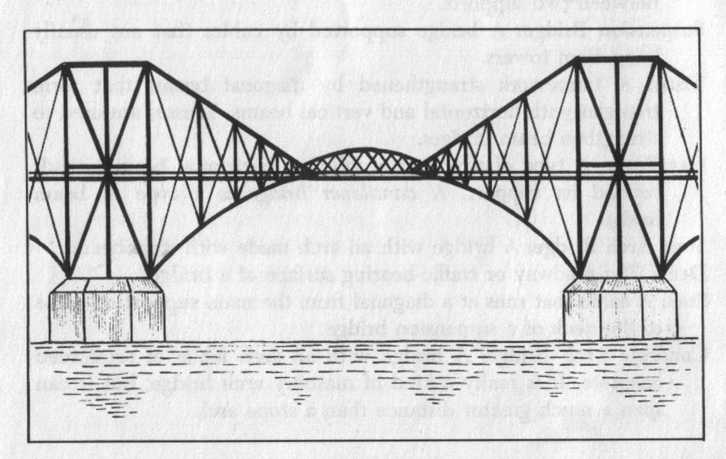
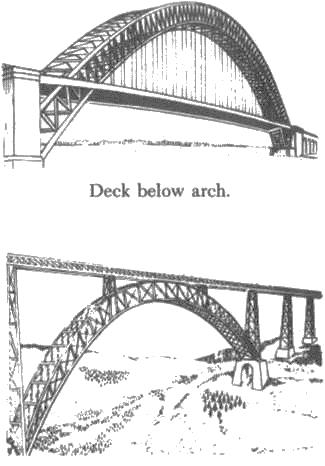
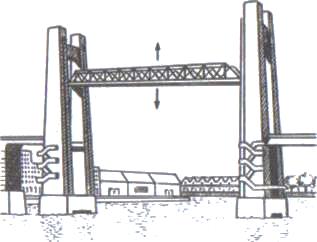
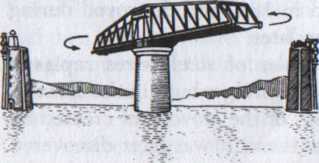 Swing
or pivot bridge
Swing
or pivot bridge